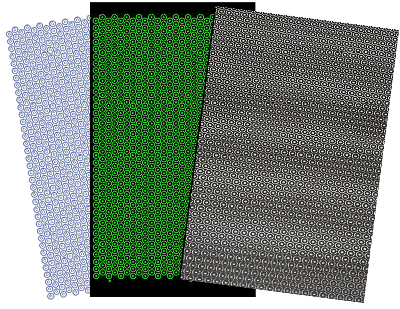This website uses cookies so that we can provide you with the best user experience possible. Cookie information is stored in your browser and performs functions such as recognising you when you return to our website and helping our team to understand which sections of the website you find most interesting and useful.
Top Advantages to Use Photochemical Etching for Your Rapid Prototyping Needs
Most of us in manufacturing are aware of the common techniques for rapid prototyping using CAD and additive manufacturing, or 3D printing:
- Stereolithography (SLA)
- Selective Laser Sintering (SLS)
- Direct Metal Laser Sintering (DMLS)
- Fused Deposition Modelling (FDM)
- Binder Jetting
- Poly Jetting
While additive is the most common for rapid prototyping, other technologies include high-speed machining, casting, molding, and extruding. However, there is still one process that some of us might have overlooked: Photochemical Etching.
For projects that require a high level of precision and complexity, photochemical machining can create parts in soft or full hard metal material without distorting the metal.
Additional benefits using photochemical etching for rapid prototyping include:
- Design Flexibility with Digital Tooling
- Quick Turnarounds and Lead Times
- Reduced Costs and Waste

Rapid Prototyping Provides Design Flexibility with Digital Tooling
Rapid prototyping through chemical etching allows for the creation of detailed, intricate parts from a wide range of metals, including exotic metals. Fotofab’s photo etching tooling is digital, unlike conventional methods such as stamping that require tooling dies.
With digital tooling that is easy to modify, part revisions can be made quickly without increasing costs or time to the overall process, unlike with CNC machining or stamping. Digital tooling can be designed and generated within hours, whereas hard tooling can take weeks. There are also additional set-up times with hard tooling that can increase the overall project time and costs.
At Fotofab, we provide in-house, value-added services that give you the flexibility required to get your products from design conception to production.
Quick Turnaround and Lead Times
The process of rapid prototyping through chemical etching is automated. Because tooling molds or physical patterns are not required, prototype parts can be created in a short amount of time when compared with other available technologies.
Another element that contributes to quick turnarounds is the CAD software that creates the digital tools. CAD allows repeating patterns of a part’s dimension, so a manufacturer can adjust production volumes without worrying about increased lead times.
New Digital Imaging (DI) technology directly plots the image onto the photoresist coated metal with front-to-back registration accuracy. This technology eliminates the cost and time required to develop a physical phototool. It also increases the speed and accuracy of the side-to-side alignment process typically done manually, further reducing your overall lead times.
Rapid Prototyping Reduces Costs and Waste
Unlike other metal part fabrication methods that use mechanical force (stamping), abrasive cutting (CNC machining), and heat (laser cutting), photochemical etching uses proprietary substrates to etch the unprotected parts of a metal surface.
Chemical etching creates a design or image formed to your project’s specifications, saving on both costs and waste. This advantage is significant for the function of many industrial components that rely on precision, low tolerances, and high conductivity.
With stamping, CNC machining, and other mechanical processes, the hard tooling needs to be replaced after some time. There are also risks of hard metals breaking the tooling. Both instances increase your costs as well as your waste.
Chemical etching does not leave burrs on the metal, nor does it affect the physical properties of the metal. Material is selectively etched in a controlled fashion, keeping scrap at a minimum. Part complexity also does not affect the overall cost.
Rapid Prototyping Manufactures On-Demand, High Quality Parts
The ability to quickly move a project from conceptual to a near-complete model is vital for industries like aerospace, defense, and medical. On-demand, high-quality parts with tight tolerances are becoming more popular as we start to see more advancements in autonomous vehicles, automation, the Industrial Internet of Things (IIoT), and wearable medical devices.
Rapid prototyping plays a vital role in solving scheduling problems, process inefficiencies, performance issues, and cost overruns. Photochemical etching accelerates those benefits even further.

